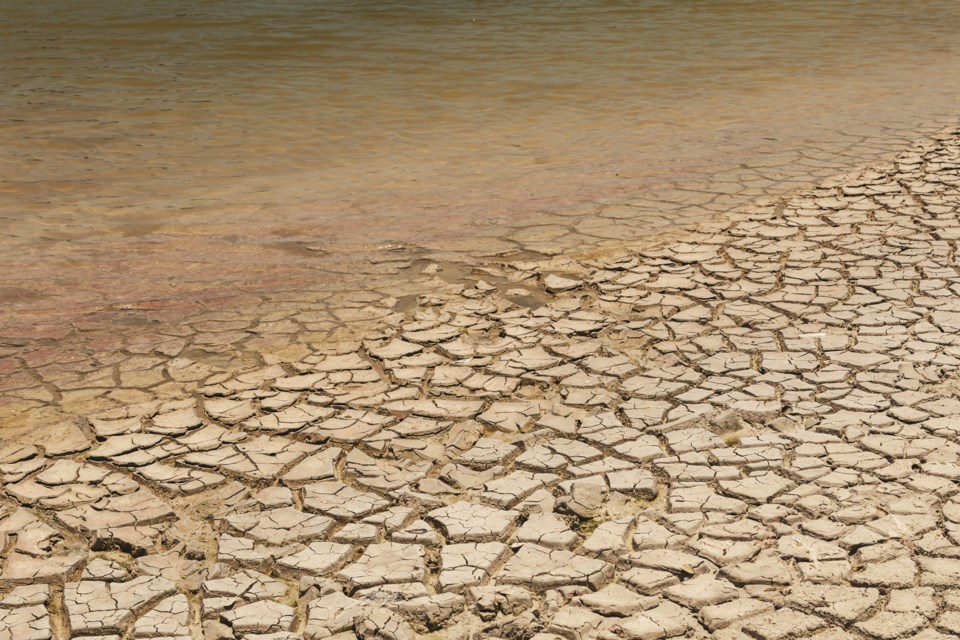Yes, we’re tired. Tired of four walls. Tired of not seeing loved ones. Tired of same-ol, same-ol with barely a glimmer of relief in sight yet, not even that quick trip, from days of yore, to Havana, Hell’s Gate or Hollywood that would perk us up at the prospect of something, anything new. (A change is as good as a rest, my parents often wisely counselled. Oh, yes.)
Flat brain. Fog brain. Pandemic brain. We’re stuck. Tired. Exhausted.
Think about that word: Exhausted. I have been for a while now, but it really hit home last week with Earth Day. I was thinking about how exhausted so many things are, beyond our flattened selves and store shelves.
Consider the exhaustion of our home-sweet-home planet: Soils exhausted. (“Feeding the soil puts food on your plate,” touts a classic Statistics Canada web page, noting how commercial farmers in 2010 used twice the amount of nitrogen from fertilizers than they did 30 years prior.) Fish stocks exhausted. (Ninety per cent of the large-fish populations in our oceans are gone, disappeared, fished out.). Water supplies exhausted. (Hello, Mexico, where drought has hit 85 per cent of the country, lakes have turned into dust, and thousands of thirsty people can’t get a drop out of their taps. Hello California, providing some 70 per cent of the fresh fruits and veggies we gobble down in B.C., and where aquifers are so depleted the land is sinking.)
Apparently all this exhaustion has grabbed other minds, too, for “exhausted” is the trope, the theme, for an interesting new project sprung from an art show in Istanbul.
Exhausted is a collaboration between SALT and e-flux Architecture around a new solo exhibition by the London-based Cooking Sections, a duo of spatial artists—Daniel Fernández Pascual and Alon Schwabe—who’ve been making art since 2013 that’s been featured in places like Tate Britain and the Venice Biennale.
Before we get into Cooking Sections, let me unpack SALT: It is a very interesting, very open-minded cultural institution in Turkey that welcomes research-based exhibitions and provides space via its centres in Istanbul and Ankara, free of charge. (Whistler artists with an eye to a broader reach, take note!)
As for e-flux, whose cool emails are also free, it’s a wonderful publishing/archival platform and artist project that started on New York’s Lower East Side almost 20 years ago. It has several arms, including the Architecture one, which is collaborating with SALT on Exhausted. (Sign up for e-flux’s mind-lifting emails on architecture and art from around the world at e-flux.com—a perfect pandemic dollop of artsy distraction.)
As for Cooking Sections, it’s their interest in art, politics and food that grabs me, including this recent exhibition and public project, CLIMAVORE: Seasons Made to Drift, at SALT Beyoğlu, Istanbul.
We’ve got your basic omnivores, herbivores, carnivores, locavores. Now CLIMAVORE explores how what we eat and the way we do it changes the climate, and vice versa. It also examines how our bodies themselves are changing with all the changing matter we’re putting into them. “Microplastics now discoverable in human organisms” read The Guardian headline last summer and, yup, those microplastics accumulate in us, just like they do everywhere.
Changing rain patterns; changing water tables; changing fishing grounds; changing ecosystems; changing soil content and microbes—all changed by us, the climavores. All of it getting quite … well, exhausted.
Appropriately, Exhausted features a series of thoughtful essays mulling over just how exhausted so many aspects of our world’s fertility is, from farming regions in India, to seed supplies, even human fertility. It all springs from that CLIMAVORE show, but British Columbians might also be interested in Cooking Section’s earlier project, Salmon: A Red Herring, a book that unpacks the provenance and power of colours, starting with salmon pink. Ever wonder about salmon, as a colour, when we have so much farmed salmon around?
I’ve used the term “Fertile Crescent” more than once in this column over the years, mostly in the context of that so-called “cradle of civilization” where farming originated some 12,000 years ago and we humans seemingly forever tossed aside our former nomadic ways (see this year’s Best Picture, Nomadland) in exchange for a richer, easier, more sedentary lifestyle.
Fertile fields and forests for the taking. Seas filled with so many fish you could walk on their backs. Crazy, paper-thin illusions of perpetual, indissoluble fertility that conquering, colonizing climavores thought would never end.
While a rebranding to the Not-So-Fertile Crescent is overdue, the original crescent-shaped area in the Middle East covered countries like Iraq, Syria, Lebanon (home of exploding fertilizer piles), and Palestine, as well as southeastern Turkey. The irony of basing an art project on examining the exhaustion of fertility in part of the old Fertile Crescent is not lost on anyone.
If you’re not too exhausted contemplating all this, a multi-link to the fading glory of taken-for-granted fertility, the Oscars, and more home-based entertainment is the documentary, Honeyland, which you can stream from Knowledge Network until May 20.
More on Honeyland and bees next col, I promise, but in the meantime, this excellent film from Macedonia was what got me thinking about all this exhaustion in the first place.
Honeyland, nominated for a couple of Oscars last year, features Hatidže Muratova, a lovely woman who lives in a tiny village in North Macedonia, about an hour’s flight from Istanbul. Hatidže, who happens to be Turkish, harvests honey from wild bees in a method used long before bee colonies came in boxes.
For now, let’s just say her neighbours have a whole other approach to raising bees, one that’s very exhausting.
More to come… gosh, I’m tired.
Glenda Bartosh is an award-winning journalist who’s just seen two bumblebees




